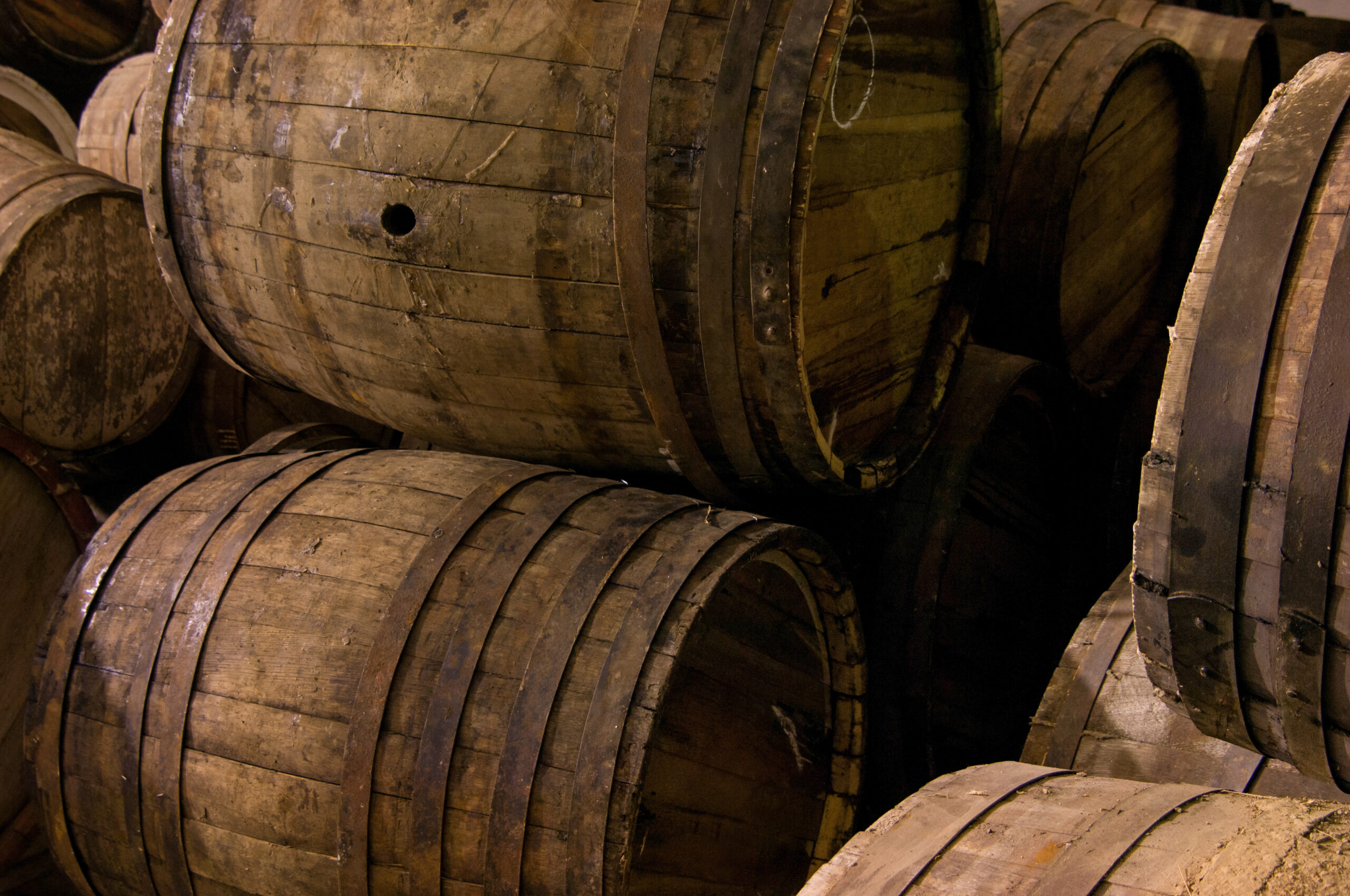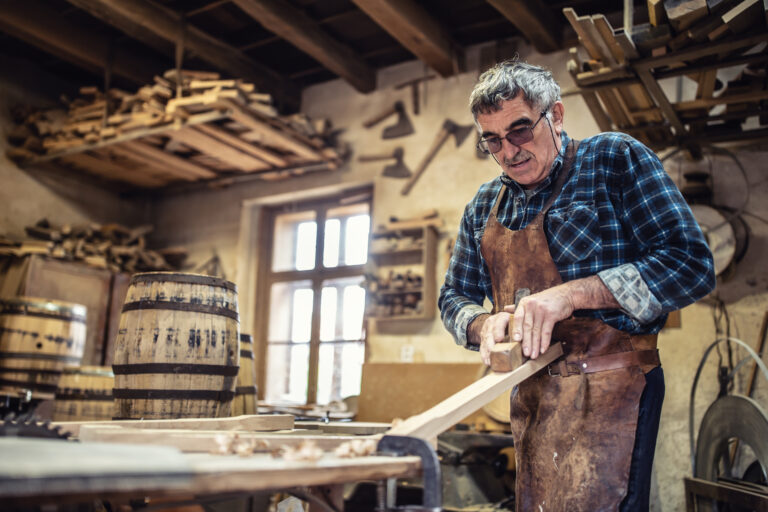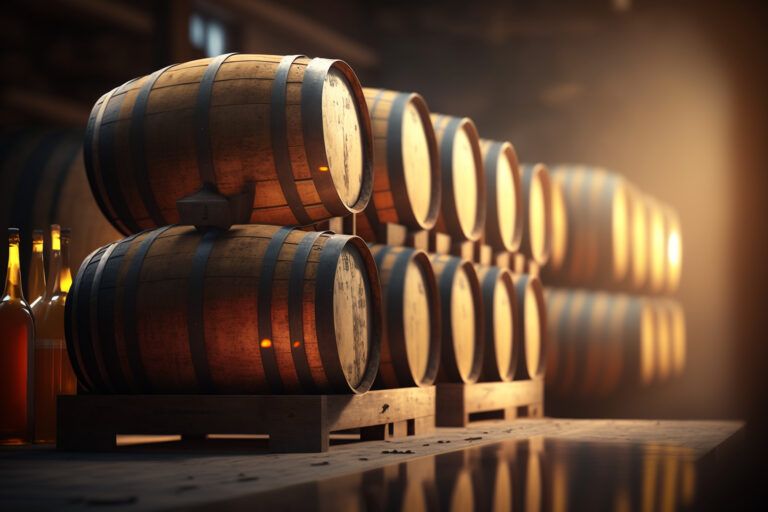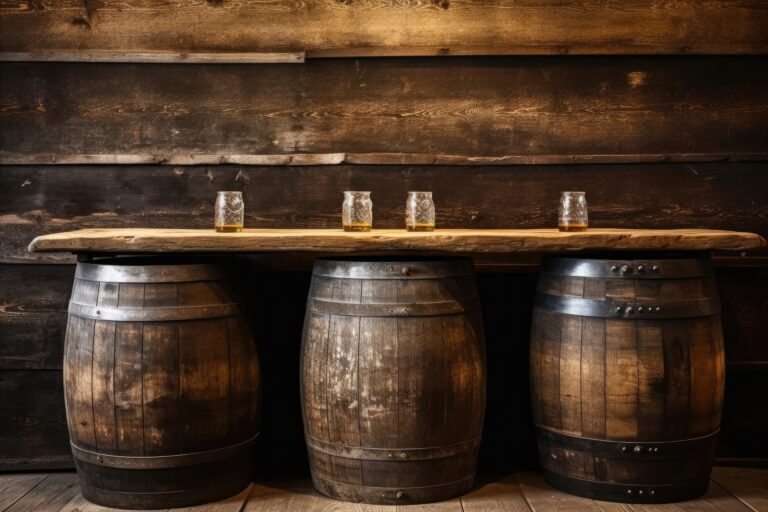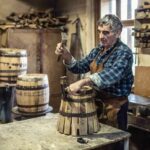When a barrel of bourbon has finished its job, its life is far from over. Those charred oak casks that have spent years giving whiskey its vanilla and caramel notes go on to live a whole second life, flavoring other spirits and foods.
After aging bourbon, the barrels are in high demand. Distillers around the world snap them up to age everything from tequila and rum to scotch and brandy. Some craft breweries even get their hands on them for special barrel-aged beers. It doesn’t stop there—the sought-after flavor from these ex-bourbon barrels is also used to finish hot sauces, vinegars, and maple syrup.
It’s pretty amazing how much flavor and aroma gets soaked into that wood, right? The next time you enjoy a glass of aged bourbon, remember that those robust, oaky notes come from a whiskey barrel that’s just getting started. Its legacy lives on, continuing to impart its delicious essence in countless liquids and foods.
The Life of a Whiskey Barrel
The journey of a whiskey barrel starts in the forest, where oak trees are harvested and crafted into staves to form the barrel. Once assembled, the inside is heavily charred to unlock flavor compounds. Distillers then fill it with bourbon or rye and let it age for years.
When the whiskey is ready, the barrels are “dumped” and the contents are bottled. But a barrel’s life doesn’t end there. Its pores are infused with the spirit’s flavor, so many distilleries sell the used barrels to other craft brewers, wineries, or distillers. This second round of aging gives beer, wine, or other spirits complementary flavors like vanilla, caramel, or smokiness.
When a barrel can no longer impart flavor, it can be recycled into furniture, home decor, or even wood chips for smoking meat. A lucky few find new life as planters or rain barrels. Though they may no longer be watertight, their weathered wood and metal bands make for a beautiful, rustic statement.
From the forest to the distillery and beyond, the life of a whiskey barrel comes full circle. It’s a noble end for such a hard-working tool.
How Whiskey is Aged in Barrels
Once whiskey has aged for a few years in charred oak barrels, the barrels are “dumped.” But their life isn’t over. They’re sold to distillers who age other spirits in them, like rum, tequila, or brandy. Sometimes, they’re sold to brewers to create barrel-aged beers. The leftover whiskey flavor, known as bourbon barrel character, gives the aged spirit or beer unique notes.
Coopers (barrel makers) also dismantle the barrels and use the staves to make furniture, flooring, and other decor. The wood’s natural beauty and aroma are prized. Some staves are made into picture frames, candle holders, bowls, and cutting boards. Repurposing spent barrels is a great way to reduce waste while creating artisanal products with a story.
Next time you sip an aged rum or tequila, or admire wood decor, consider its history aging fine whiskey. A second life for barrels means less environmental impact and more beauty in the world.
When Whiskey Barrels Are “Dumped” and Ready for Reuse
After years of aging whiskey, the barrels are “dumped” and the aged spirit is bottled. But the barrels still have plenty of life left in them. Distilleries often sell or give away the used barrels, continuing their legacy.
Reusing Barrels
Used whiskey barrels are popular for aging rum, tequila, brandy, and other spirits. The leftover whiskey flavor in the wood infuses into the new spirit, adding complex notes of vanilla, caramel, and oak. Breweries also reuse whiskey barrels to age stouts, porters, and barleywines. Some distilleries even repurpose their own used barrels to make barrel-aged cocktails, vinegar, and hot sauces.
Decor and Furniture
Used whiskey barrels have a rustic appeal and are often used as decor in homes, bars, and restaurants. They’re made into tables, stools, planters, and other furnishings. The charred oak barrels have a distinctive aroma that many people find pleasant and reminiscent of the distillery. Crafty individuals may turn used barrels into works of art by wood-burning designs and images into the staves. The natural staining and patina of the barrel wood creates an ideal canvas.
Whiskey barrels lead very full lives. Even after aging spirits for years, these humble oak casks have so much to offer through reuse, repurposing, and decoration.
Second Lives for Used Whiskey Barrels
Once a whiskey has aged to maturity in charred oak barrels, the barrels themselves still have plenty of life left. Many find second lives aging other spirits or foods and drinks.
Distilleries often sell used barrels to craft breweries and wineries. The leftover oak flavors and aromas from years of whiskey aging are eagerly sought after. Brewers age stouts, porters, and barleywines in ex-whiskey barrels to impart notes of vanilla, spice, and oak. Winemakers age hearty reds like Cabernet Sauvignon, Malbec, and Tempranillo in used whiskey barrels for similar effects.
Restaurants have also gotten into the barrel-aging game. Chefs fill used whiskey barrels with cocktails, stouts, and cider, aging them for months or years. The results are truly distinctive aged cocktails with whiskey undertones. Some chefs even age steak, fish, or cheese in whiskey barrels to infuse them with rich, smoky flavors.
When their aging days are over, used whiskey barrels often find new life as furniture like tables, stools, and planters. Their worn, charred oak construction gives them a rustic character that’s perfect for lodge-style decor.
Whiskey barrels may be emptied of their precious aged contents, but for creative minds, the fun is just getting started. Their potential for flavoring and decorating seems virtually endless.
Whiskey Barrels Repurposed as Decor and Furniture
Once whiskey has aged in barrels, the wood has imparted its distinctive flavor to the spirit. But the barrels themselves still have life left. Many find new purpose as decor or furniture.
Barrel Tables
Repurposed barrels make charming tables, whether cut in half or used whole. Their worn, rustic wood and metal accents give a cozy, lived-in feel. Barrel tables are ideal for cottages, cabins, or rustic-themed rooms.
Barrel Staves
The curved wooden planks that make up a barrel, called staves, can be used individually in creative ways. Stacked together, they form an eye-catching barrel shape. Or, use a single stave as a rustic shelf, coat rack, or towel holder. For a simple DIY project, secure a few staves together to make a barrel planter or lamp.
Accent Pieces
Smaller barrel pieces add warmth and character as accent decor. Chairs, ottomans, and stools made from repurposed barrels or metal barrel hoops have a classic yet modern farmhouse style. You can also find barrel-inspired accessories like clocks, lighting fixtures, and vases.
Repurposing them as decor or furniture is an eco-friendly choice that allows their rich history and handcrafted appeal to live on and enrich your space. By giving old barrels a new lease on life, you keep a small piece of distilling tradition alive.
Used Whiskey Barrels for Aging Other Spirits
Once whiskey has been aged in barrels, the barrels are emptied of their precious cargo. But that doesn’t mean the barrels are done being useful. The barrels, having imparted flavor and color to the whiskey, still retain some of those characteristics. This makes them ideal for aging other spirits.
Brandy
The lightly charred oak barrels are perfect for mellowing and flavoring brandy. Brandy absorbs the leftover whiskey flavors and aromas from the used casks, which helps transform harsh, colorless brandy into a smooth, amber-hued spirit.
Rum
Dark and spiced rums are often aged in used whiskey barrels. The barrels impart hints of vanilla, caramel, and smoke to the rum. Rum producers frequently age their spirits in used bourbon barrels from Kentucky to achieve an authentic American whiskey flavor profile.
Port and Sherry
Some port and sherry producers use seasoned whiskey barrels to age their wines. The barrels enhance the flavor of these rich, sweet wines with undertones of toffee, nuts, and warm spice.
Beer
Craft brewers frequently age special releases of stout, barleywine, and porter in used whiskey barrels. The barrels impart distinctive whiskey and oak flavors to the beer that complement roasted malts and caramel flavors. Whiskey barrel-aged beers have become highly sought after by beer connoisseurs.
Craft Brewers Love Aged Whiskey Barrels
Craft brewers are always looking for ways to impart unique flavors to their beers, and aged whiskey barrels provide the perfect solution. Barrels previously used to age whiskey have absorbed years of oak and spirit, leaving behind wood sugars, spices, and caramel-like flavors.
When craft brewers fill these barrels with beer, it soaks up these complex flavors. The results are brews with tastes of vanilla, oak, and whiskey that complement the original beer. The longer the beer ages in the barrels, the more flavor it picks up. Many brewers experiment with different types of barrels, from bourbon to scotch, to find new flavor profiles. The demand for these specialty brews is constantly growing.
The leftover whiskey barrels don’t go to waste. They are often sold to distilleries, wineries, and cideries to continue the cycle of flavoring and aging more craft beverages. When a barrel can no longer impart flavor, some are recycled into furniture, planters, or other decor.
With the growing popularity of craft brewing, the demand for used whiskey barrels is increasing. This symbiotic relationship between two age-old crafts, barrel-making and distilling, lives on in the new tradition of barrel-aged craft beers.
Used Whiskey Barrels Impart Flavor to Wine
Winemakers have discovered that placing wine in used barrels imparts subtle flavors and aromas to the wine. The barrels infuse notes of vanilla, caramel, and spice from the wood and whiskey.
Once emptied of whiskey, the barrels still retain strong oak and spirit flavors that are absorbed into the wine during aging. The porous wood allows tiny amounts of oxygen to interact with the wine, mellowing tannins and rounding out flavors. Wines aged in used barrels often have hints of the barrel’s previous inhabitant, creating complex flavors not found in new oak barrels.
Certain wines pair well with specific types of used barrels. For example, Cabernet Sauvignon or Malbec are enhanced by bourbon barrels, while Pinot Noir benefits from cognac barrels. The wood varieties also matter, with French oak imparting more subtle flavors than American oak. Winemakers often blend wines aged in new and used barrels to create balanced flavors.
Used barrels have become popular as people search for artisanal wines with distinctive tastes. However, the barrels can only be used a limited number of times before they lose the ability to enhance flavor. When no longer useful for aging wine, the barrels find new life as decor or are recycled.
FAQ on Reusing Whiskey Barrels
Once whiskey barrels are emptied, the wood has absorbed flavors and aromas from the aging process. The barrels are rarely used for aging whiskey again. However, they are often repurposed.
What do distilleries do with used whiskey barrels? Many distilleries sell the used barrels. Homebrewers and craft distilleries will buy them for aging beer, wine, cider, or other spirits. The barrels impart hints of whiskey flavor to whatever they age next.
Some used whiskey barrels find a second life aging port, sherry, or rum. The leftover wood character meshes well with these spirits. Brewers also like to age beer, especially darker styles like stouts and porters, in used whiskey barrels. The wood notes enhance the roasted, caramel flavors of the beer.
A popular trend is aging coffee beans in used whiskey barrels before roasting. The beans absorb appealing aromas from the wood that translate into the finished coffee. Some distilleries even make barrel-aged cocktail bitters or barrel-aged maple syrup.
When all else fails, used whiskey barrels have decorative uses too. Many are turned into furniture like tables, chairs, or candle holders. The beautiful wood and metal hoops make a rustic statement. Some become planters, while others are crafted into wall art or room dividers.
As you can see, used whiskey barrels live on in many ways. Their job aging whiskey may be done, but these humble containers continue to impart flavor and aroma in creative new applications. It’s a sustainable practice that allows the barrels’ legacy to endure.
Final Thoughts
So there you have it, an inside look into the fascinating life of whiskey barrels after they’ve done their time aging whiskey. Those charred oak barrels don’t just get thrown out—they go on to have prolific second careers. Whether they’re turned into furniture, decorations, or used to age other spirits and wines, those barrels continue to impart their distinctive character long after being emptied of whiskey. And even if they’re broken down into wood chips or staves, they still find their way into flavoring new batches of bourbon or other alcohol. Nothing goes to waste in the whiskey world. Pretty amazing for humble barrels of wood and iron that started out as simple containers, isn’t it? The next time you sip an aged whiskey, rum, or wine, raise your glass to the barrel that helped create its distinctive taste. Its work may be done with that particular spirit, but its legacy lives on.
